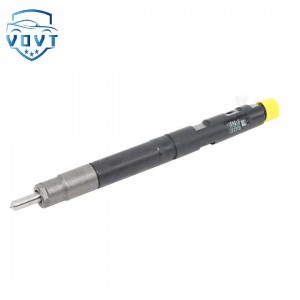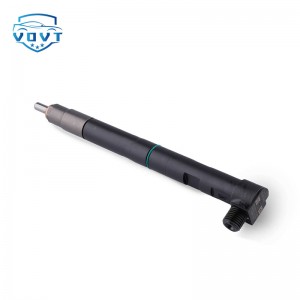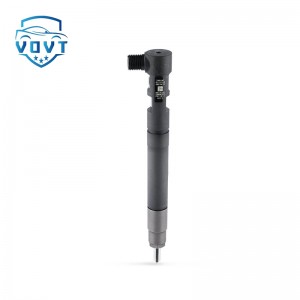High Performance Fuel Injector EJBR01801Z Diesel Injector Common Rail Injector Engine Parts for Delphi Auto
Products Description
| Reference. Codes | EJBR01801Z |
| Application | / |
| MOQ | 4PCS |
| Certification | ISO9001 |
| Place of Origin | China |
| Packaging | Neutral packing |
| Quality Control | 100% tested before shipment |
| Lead time | 7~10 working days |
| Payment | T/T, L/C, Paypal, Western Union, MoneyGram or as your requirement |
Diesel injector orifice flow cavitation risk
The injector nozzle is an important precision component linking fuel injection and atomisation, and the operational efficiency of the fuel injection system is significantly affected by the flow characteristics within the nozzle. Fuel in the pressure chamber into the inlet of the nozzle, the cross-sectional area of the flow channel contraction, the fuel flow rate increases, the local pressure is reduced to below the saturation vapour pressure of the fuel, resulting in cavitation. Continuously generated cavitation bubble collapse under high-pressure conditions, the collapse of the micro-jet and its impact pressure generated by the impact of the inner surface of the spray hole, with the passage of time, the inner surface of the spray hole will produce cracks and craters, the nozzle internal flow and spray atomisation will be affected, and in severe cases, the nozzle will fail. Therefore, it is of great significance to study the development of cavitation flow inside the nozzle and cavitation wear on the inner wall surface of the spray hole.
The geometrical parameters of the nozzle have a greater influence on cavitation flow and cavitation wear.Shervani et al. and Lee et al. concluded through simulation analysis that an increase in the taper of the nozzle can effectively reduce the effect of bubble collapse on the cavitation wear on the inner surface of the nozzle, and that the reliability of the nozzle will be improved. Lee et al. from Hanyang University conducted an experimental study and found that the larger the ratio of nozzle length to diameter, the more energy is needed to generate cavitation, i.e., cavitation is suppressed as the length of the nozzle increases.Brusiania et al. compared the hydrodynamic performances of cylindrical and conical nozzles and found that the degree of internal flow in a conical nozzle is significantly reduced, and the overall uniformity of the flow is significantly improved. In terms of cavitation risk prediction, Dular et al. concluded from their analysis that the cavitation bubbles near the wall will collapse asymmetrically, and produce micro-jet impact flow to the wall on the side farther away from the inner wall of the nozzle.Zhang et al. derived a new cavitation wear prediction model based on the theory of mass transfer rate between different phases by studying the mass transfer rate between different phases and verified it in the simplified nozzle, but the model could not accurately predict the cavitation risk, and it is not possible to predict the risk of cavitation. However, the model is unable to provide an accurate quantitative characterisation of cavitation risk. Currently, when assessing the risk of cavitation wear in a nozzle, the main focus is on the area of the nozzle where cavitation is likely to occur and on assessing the degree of cavitation wear at different locations within the nozzle. However, there is no quantitative representation of the degree of wear in areas where cavitation is likely to occur, and there is a lack of research into the effect of the geometric parameters of the nozzle on the risk of cavitation damage.























